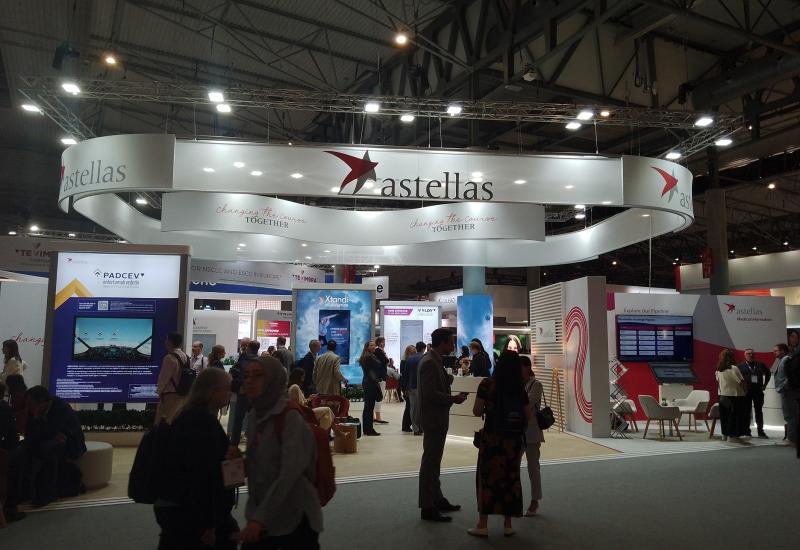
Interview – Kura’s combo test nears
Can a combination approach improve the efficacy of ziftomenib in AML patients with KMT2A rearrangements?
Can a combination approach improve the efficacy of ziftomenib in AML patients with KMT2A rearrangements?

In the race to bring a menin inhibitor to market Kura Oncology has fallen behind its main rival, Syndax. The former group has not been helped by the fact that its project, ziftomenib, has so far showed disappointing efficacy in a certain genetic subtype of acute myeloid leukaemia patients, those with KMT2A rearrangements.
Kura hopes to regain some ground next year, and its first readout will come from Komet-007, a phase 1 study evaluating ziftomenib combinations. With other players, such as Johnson & Johnson, joining the menin fray, Kura needs a result here – but given the small number of patients involved, efficacy data could be tricky to interpret.
Go Komet
Komet-007 tests ziftomenib combos in first-line or relapsed/refractory AML, and is enrolling patients with either KMT2A rearrangements or NPM1 mutations – the two genetic subtypes in which menin inhibitors have so far shown utility.
Ziftomenib is being combined with different agents in the different therapy lines: cytarabine plus daunorubicin in front-line disease, and Venclexta plus azacitidine in relapsed/refractory.
Design of dose-escalation portion of phase 1 Komet-007 trial
| Setting | Combo |
|---|---|
| Cohort A: NPM1-mutant AML | |
| Relapsed/refractory | Ziftomenib + Venclexta + azacitidine |
| First line | Ziftomenib + cytarabine + daunorubicin (7+3 chemo) |
| Cohort B: KMT2A-rearranged AML | |
| Relapsed/refractory | Ziftomenib + Venclexta + azacitidine |
| First line | Ziftomenib + cytarabine + daunorubicin (7+3 chemo) |
Note: 3 doses planned per arm, with 6 pts per dose. Source: clinicaltrials.gov & company communications.
Kura plans to recruit 72 patients into the dose-escalation phase, and early in the first quarter of 2024 it is set to report data on the first 20. The update will include patients from each subgroup, Mollie Leoni, Kura’s executive vice-president of clinical development, tells ApexOnco.
A big focus will be on KMT2Ar AML, where ziftomenib monotherapy showed lacklustre efficacy in the Komet-001 relapsed/refractory trial. Indeed, in February 2023, Kura said it was no longer pursuing ziftomenib monotherapy in this genetic subtype, and instead would focus on combinations. The group continues to evaluate monotherapy in NPM1-mutant disease, where it has performed much better.
Kura believes the difference is down to high rates of an adverse event, differentiation syndrome, in KMT2Ar disease, which has prevented patients from receiving sufficient therapy.
Differentiation syndrome, which can lead to heart and kidney failure, is thought to be triggered by leukaemia cells releasing large amounts of cytokines in response to certain drugs.
Leoni notes that in NPM1m patients disease is “mostly found in the marrow”, while KMT2Ar patients “have it everywhere, in hard to predict or even pre-identify areas”. It is this that makes it tricky to anticipate how KMT2Ar patients will experience differentiation syndrome, “since ziftomenib is highly tissue penetrant”, she adds.
The company hopes to solve this issue with the combination approach, with the backbone therapy given before ziftomenib is administered. “If we can clear the [leukaemic] cells with another method, at least somewhat at first, then there are just fewer cells to differentiate, and fewer cytokines running around causing havoc,” Leoni says.
She adds that a 15% or lower rate of severe differentiation syndrome in KMT2Ar patients in Komet-007 would be ideal – in Komet-001 25-30% of this subgroup experienced grade 3 or higher differentiation syndrome. In NPM1m patients Leoni expects a single-digit rate of grade 3+ differentiation syndrome.
Efficacy bar
Once the risk of differentiation syndrome is reduced “I think we’ll see much more similar efficacy between the populations”, she says.
Although the focus of the readout will be safety and tolerability, there should also be some efficacy data. At the Jefferies Healthcare conference in London in November, Kura’s chief executive officer, Troy Wilson, noted the CR/CRi rates with the backbone therapies being used in Komet-007: 60-80% with cytarabine/daunorubicin chemo and 30-40% with Venclexta/azacitidine.
But he also cautioned against drawing too many conclusions from a comparison of large phase 3 studies with a small phase 1 trial.
Kura hopes to be able to file ziftomenib in KMT2Ar AML based on the randomised, dose-expansion portion of Komet-007, although it hasn't yet discussed this with regulators, Leoni says.
In NPM1m relapsed/refractory AML the company plans to use the phase 2 portion of the Komet-001 trial as the basis for full approval; enrolment is expected to complete by mid-2024.
Meanwhile Kura’s big rival, Syndax, plans to file its menin inhibitor, revumenib, for KMT2Ar acute leukaemia by the end of the year, based on the Augment-101 study, results from which were recently presented at ASH. Augment-101 is also evaluating revumenib in NPM1m disease, with enrolment expected to complete late in the first quarter or early in the second quarter of next year.
871













